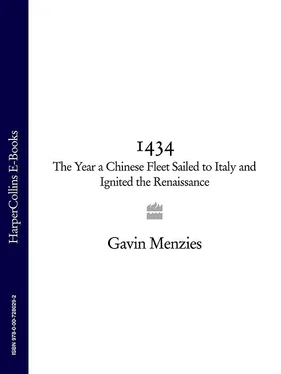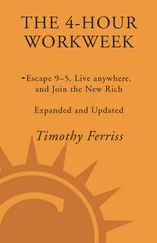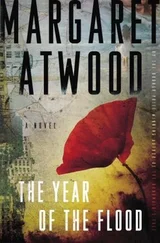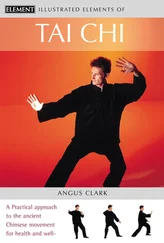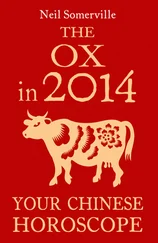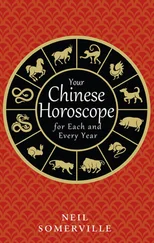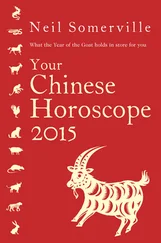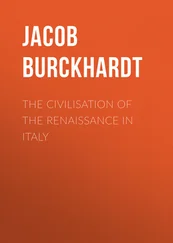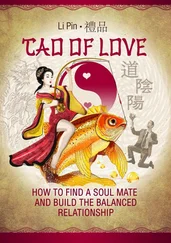THE YEAR
A MAGNIFICENT CHINESE FLEET
SAILED TO ITALY
AND IGNITED THE RENAISSANCE
GAVIN MENZIES

This book is dedicated to my beloved wife, Marcella, who has traveled with me on the journeys related in this book and through life
CHINESEN OMENCLATURE CONTENTS CHINESEN OMENCLATURE INTRODUCTION I Setting the Scene 1 A LAST VOYAGE 2 THE EMPEROR’S AMBASSADOR 3 THE FLEETS ARE PREPARED FOR THE VOYAGE TO THE BARBARIANS 4 ZHENG HE’S NAVIGATORS’ CALCULATION OF LATITUDE AND LONGITUDE 5 VOYAGE TO THE RED SEA 6 CAIRO AND THE RED SEA–NILE CANAL II China Ignites the Renaissance 7 TO THE VENICE OF NICCOLO DA CONTI 8 PAOLO TOSCANELLI’S FLORENCE 9 TOSCANELLI MEETS THE CHINESE AMBASSADOR 10 COLUMBUS’S AND MAGELLAN’S WORLD MAPS 11 THE WORLD MAPS OF JOHANNES SCHÖNER, MARTIN WALDSEEMÜLLER, AND ADMIRAL ZHENG HE 12 TOSCANELLI’S NEW ASTRONOMY 13 THE FLORENTINE MATHEMATICIANS: TOSCANELLI, ALBERTI, NICHOLAS OF CUSA, AND REGIOMONTANUS 14 LEON BATTISTA ALBERTI AND LEONARDO DA VINCI 15 LEONARDO DA VINCI AND CHINESE INVENTIONS 16 LEONARDO, DI GIORGIO, TACCOLA, AND ALBERTI 17 SILK AND RICE 18 GRAND CANALS: CHINA AND LOMBARDY 19 FIREARMS AND STEEL 20 PRINTING 21 CHINA’S CONTRIBUTION TO THE RENAISSANCE III China’s Legacy 22 TRAGEDY ON THE HIGH SEAS: ZHENG HE’S FLEET DESTROYED BY A TSUNAMI 23 THE CONQUISTADORES’ INHERITANCE: OUR LADY OF VICTORY Acknowledgments Notes Bibliography Permissions Photograph Credits Index Also by Gavin Menzies Copyright About the Publisher
Most names are rendered in Pinyin, which is now standard in China— for example, the modern spelling Mao Zedong, not Mao Tse-tung. For simplicity, however, I have retained the older form of Romanization known as Wade-Giles, for names that have long been familiar to Western readers. The Wu Pei Chi , for instance, is more readily recognized than the Wu Bei Zhi . I have also kept the more established spellings of Cantonese place-names, writing of Hong Kong and Canton, rather than Xianggang and Guangzhou. Inscriptions on navigational charts have been left in the older form, as have academic texts in the bibliography.
CHINESEN OMENCLATURE CHINESEN OMENCLATURE CONTENTS CHINESEN OMENCLATURE INTRODUCTION I Setting the Scene 1 A LAST VOYAGE 2 THE EMPEROR’S AMBASSADOR 3 THE FLEETS ARE PREPARED FOR THE VOYAGE TO THE BARBARIANS 4 ZHENG HE’S NAVIGATORS’ CALCULATION OF LATITUDE AND LONGITUDE 5 VOYAGE TO THE RED SEA 6 CAIRO AND THE RED SEA–NILE CANAL II China Ignites the Renaissance 7 TO THE VENICE OF NICCOLO DA CONTI 8 PAOLO TOSCANELLI’S FLORENCE 9 TOSCANELLI MEETS THE CHINESE AMBASSADOR 10 COLUMBUS’S AND MAGELLAN’S WORLD MAPS 11 THE WORLD MAPS OF JOHANNES SCHÖNER, MARTIN WALDSEEMÜLLER, AND ADMIRAL ZHENG HE 12 TOSCANELLI’S NEW ASTRONOMY 13 THE FLORENTINE MATHEMATICIANS: TOSCANELLI, ALBERTI, NICHOLAS OF CUSA, AND REGIOMONTANUS 14 LEON BATTISTA ALBERTI AND LEONARDO DA VINCI 15 LEONARDO DA VINCI AND CHINESE INVENTIONS 16 LEONARDO, DI GIORGIO, TACCOLA, AND ALBERTI 17 SILK AND RICE 18 GRAND CANALS: CHINA AND LOMBARDY 19 FIREARMS AND STEEL 20 PRINTING 21 CHINA’S CONTRIBUTION TO THE RENAISSANCE III China’s Legacy 22 TRAGEDY ON THE HIGH SEAS: ZHENG HE’S FLEET DESTROYED BY A TSUNAMI 23 THE CONQUISTADORES’ INHERITANCE: OUR LADY OF VICTORY Acknowledgments Notes Bibliography Permissions Photograph Credits Index Also by Gavin Menzies Copyright About the Publisher Most names are rendered in Pinyin, which is now standard in China— for example, the modern spelling Mao Zedong, not Mao Tse-tung. For simplicity, however, I have retained the older form of Romanization known as Wade-Giles, for names that have long been familiar to Western readers. The Wu Pei Chi , for instance, is more readily recognized than the Wu Bei Zhi . I have also kept the more established spellings of Cantonese place-names, writing of Hong Kong and Canton, rather than Xianggang and Guangzhou. Inscriptions on navigational charts have been left in the older form, as have academic texts in the bibliography.
INTRODUCTION
I Setting the Scene
1 A LAST VOYAGE
2 THE EMPEROR’S AMBASSADOR
3 THE FLEETS ARE PREPARED FOR THE VOYAGE TO THE BARBARIANS
4 ZHENG HE’S NAVIGATORS’ CALCULATION OF LATITUDE AND LONGITUDE
5 VOYAGE TO THE RED SEA
6 CAIRO AND THE RED SEA–NILE CANAL
II China Ignites the Renaissance
7 TO THE VENICE OF NICCOLO DA CONTI
8 PAOLO TOSCANELLI’S FLORENCE
9 TOSCANELLI MEETS THE CHINESE AMBASSADOR
10 COLUMBUS’S AND MAGELLAN’S WORLD MAPS
11 THE WORLD MAPS OF JOHANNES SCHÖNER, MARTIN WALDSEEMÜLLER, AND ADMIRAL ZHENG HE
12 TOSCANELLI’S NEW ASTRONOMY
13 THE FLORENTINE MATHEMATICIANS: TOSCANELLI, ALBERTI, NICHOLAS OF CUSA, AND REGIOMONTANUS
14 LEON BATTISTA ALBERTI AND LEONARDO DA VINCI
15 LEONARDO DA VINCI AND CHINESE INVENTIONS
16 LEONARDO, DI GIORGIO, TACCOLA, AND ALBERTI
17 SILK AND RICE
18 GRAND CANALS: CHINA AND LOMBARDY
19 FIREARMS AND STEEL
20 PRINTING
21 CHINA’S CONTRIBUTION TO THE RENAISSANCE
III China’s Legacy
22 TRAGEDY ON THE HIGH SEAS: ZHENG HE’S FLEET DESTROYED BY A TSUNAMI
23 THE CONQUISTADORES’ INHERITANCE: OUR LADY OF VICTORY
Acknowledgments
Notes
Bibliography
Permissions
Photograph Credits
Index
Also by Gavin Menzies
Copyright 1434 THE YEAR A MAGNIFICENT CHINESE FLEET SAILED TO ITALY AND IGNITED THE RENAISSANCE GAVIN MENZIES
About the Publisher
One thing that greatly puzzled me when writing 1421 was the Olack of curiosity among many professional historians.
After all, Christopher Columbus supposedly discovered America in 1492. Yet eighteen years before he set sail, Columbus had a map of the Americas, which he later acknowledged in his logs. Indeed, even before his first voyage, Columbus signed a contract with the king and queen of Spain that appointed him viceroy of the Americas. His fellow ship’s captain Martín Alonso Pinzón, who sailed with him in 1492, had too seen a map of the Americas—in the pope’s library.
How do you discover a place for which you already have a map?
The same question could be asked of Magellan. The strait that connects the Atlantic to the Pacific bears the great Portuguese explorer’s name. When Magellan reached that strait in 1520, he had run out of food and his sailors were reduced to eating rats. Worse, they were convinced they were lost. Esteban Gómez led a mutiny, seizing the San Antonio with the intent to lead part of the expedition back to Spain. Magellan quashed the mutiny by claiming he was not at all lost. A member of the crew wrote, “We all believed that [the Strait] was a cul-de-sac; but the captain knew that he had to navigate through a very well-concealed strait, having seen it in a chart preserved in the trea sury of the king of Portugal, and made by Martin of Bohemia, a man of great parts.” 1
Why was the strait named after Magellan when Magellan had seen it on a chart before he set sail? It doesn’t make sense.
The paradox might be explained had there been no maps of the strait or of the Pacific—if, as some believe, Magellan was bluffing about having seen a chart. But there were maps. Martin Waldseemüller published his map of the Americas and the Pacific in 1507, twelve years before Magellan set sail. In 1515, four years before Magellan sailed, Johannes Schöner published a map showing the strait Magellan is said to have “discovered.”
Читать дальше
